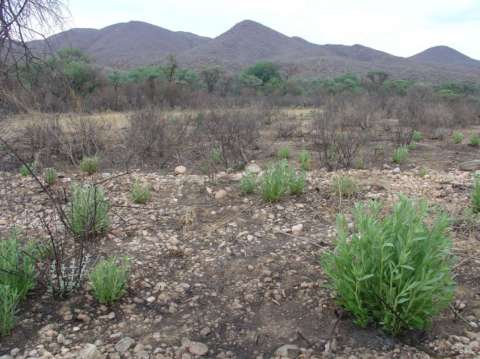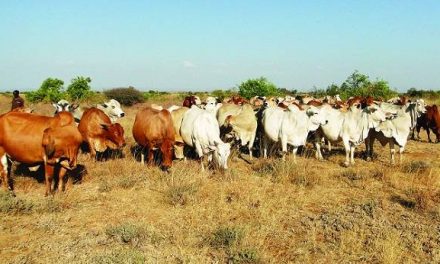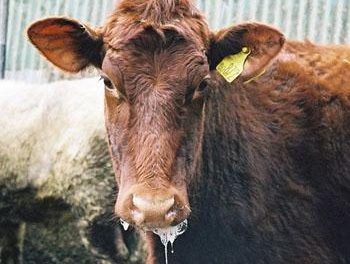
Manual on how to produce animal feed from local encroached bush launched

“Farms become more drought resilient, productive rangeland is restored through bush thinning and billions are saved in reduced animal fodder imports if animal fodder can be produced locally from encroached bush”, this is the shared sentiment at the 22nd Rangeland Forum held in Otjiwarongo this week.
Director of Forestry in the Ministry of Agriculture, Water and Forestry, Joseph Hailwa said with successful cattle and sheep feeding trials in three different environments; the conservancy area of African Wilddog at Okondjatu, the government farm Omatjenne and a commercial farm near Dordabis, the results clearly demonstrate that the tested approach is relevant for a broad spectrum of farmers.
It was in this vein that the Forum saw the launch of a manual on producing animal feed from encroached bush. The manual is the first of its kind that is aimed at providing practical guidelines on how to produce fodder for both large and small stock using indigenous encroached bush species as a key ingredient.
Furthermore, the manual outlines the great potential for bush-based animal fodder value chain in Namibia, both for commercial enterprises as well as in community-based settings. More so, the value chain is an opportunity to combat bush encroachment, especially when pursued in combination with other value chains such as charcoal, firewood and biochar.
Hailwa further commanded the involved stakeholders for the successful research trials by noting the significant contribution of such research to national such as Growth at Home, the Drought Policy and the National Rangeland Management Policy and Strategy and in view of the bush encroachment challenge.
The research has shown that it is possible to produce animal fodder locally, using leaves and branches of encroached bush species in combination with available supplements. The extensive research has shown that such production is not only economically viable, but also free of health-related risks for the animals if applied correctly.
He further urged participants at the Forum to identify strategies to commercialise the livestock industry firstly through improved grass production and secondly through bush-based fodder production in Namibia to make farmers more profitable, whilst producing inputs locally for Namibian markets at a competitive rate to reduce the high dependency on imports.
The research trials were spearheaded by the Ministry/GIZ Bush Control and Biomass Utilisation Project along with implementing partners, Directorate Agricultural Research and Development of Ministry of Agriculture, Water and Forestry, the UNDP funded project for Sustainable Management of Namibia’s Forested Lands (NAFOLA), African Wild Dog Conservancy as well as Farm Langbeen. Project sponsors further include Feedmaster as well as Beefcor Meat Suppliers. An extensive research project and pilot trials were implemented from April 2016 to July 2017.
Detailed information as well as the publications are available at the De-bushing Advisory Service. Progress Kashandula, can be contacted via e-mail: [email protected]











































